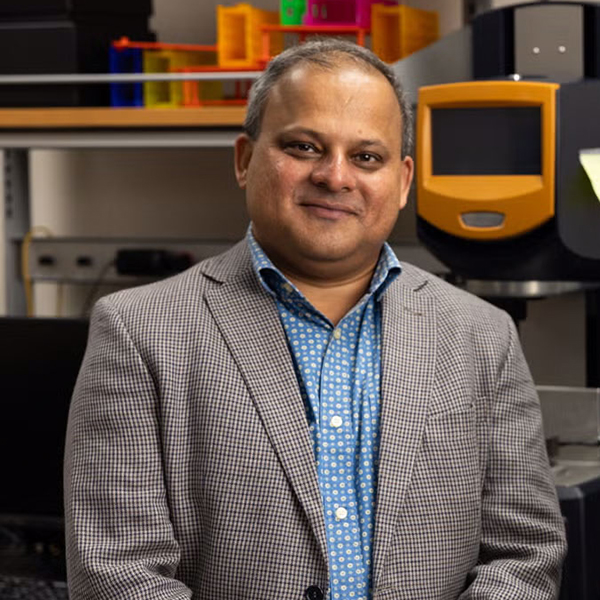

Research Terms
Energy Chemical Engineering Environmental Chemistry Combat Engineering Military Medicine Chemistry Ground Support Systems and Equipment Infrared Detectors Measurement Science
Keywords
Additive Manufacturing Catalysis Corrosion Resistant Coatings Military Medicine Protective Coatings (Omniphobic) Smart Sensor Materials
Industries
International Zeolite Association, Member; 2021 - present
Lunar & Planetary Institute, Member; 2021 - present
Materials Research Society, Member; 2019 - present
American Chemical Society, Member; 2018 - present
The University of Central Florida invention is a novel composition for coatings to protect most surfaces, such as wood, glass, metal and fabrics from dust and liquids. Durable and dust-repellant, the bio-friendly, pathogen-resistant, and hydrophobic coatings can protect equipment or surfaces against environmental hazards. The protective coatings can repel low surface tension liquids and prevent the adhesion of solids such as ice and aerosol to lengthen the life of almost any object.
The coatings are most useful in environments where dust, pathogens, biofouling, fingerprints, weather events, or other circumstances can adversely affect surfaces. For example, the coatings can protect camera lenses and other optical devices. It can be used in a vast array of fields like aerospace, medical, surgical, and energy applications (such as solar panels, wind turbines, oil rigs, heat exchangers, and other equipment). Industries such as automotive, outdoor sports equipment, and home-related areas can also benefit from the invention.
Technical Details: The UCF invention is a composition and methods that use a combination of silanes such as octadecyltrichlorosilane (OTS) and Poly(3,4-ethylenedioxythiophene):polystyrene sulfonate (PEDOT:PSS). The coatings take advantage of the effects of dynamic contact angles and contact angle hysteresis values to determine the super-repellent behavior of the coated surfaces, as well as static contact angles. Compared to other coatings, the UCF technology can be water-resistant and hydrophobic and serve the dual purposes of pathogen resistance and dust repellency. In particular, the coatings can effectively repel sub-nanometer scale to millimeter range particulates from the surface.
Partnering Opportunity: The research team is seeking partners for licensing, research collaboration, or both.
The University of Central Florida invention is a rapid-action, polymer-based hemostatic bandage system that can withstand uncompromising blood loss. The two-component mixture of the hemostatic system chemically reacts to form a stiff, non-toxic foam that forms an artificial blockage which creates an autogenous pressure on the wound to control and arrest profuse bleeding. The sponge-like, polymer-based foam acts as a “tamponade” by expanding rapidly and arresting bleeding within a matter of minutes and can be removed without any signs of embolism, or any form of tissue, muscular or vascular damage. This unique formulation presents an easy and economical approach to a biocompatible and hydrophobic hemostatic bandage system with spontaneous self-expanding properties. The system is also capable of remaining functional in inclement weather conditions, which is often the case in battlefields and fields of operation.
Partnering Opportunity
The research team is seeking partners for licensing, research collaboration, or both.
Stage of Development
Prototype available.
Researchers at the University of Central Florida have invented technologies that provide alternative methods for using clay to produce environmentally friendly, commercially viable, and sustainable material for applications in the energy sector. The world's rising energy needs and reliance on fossil fuels result in significant environmental damage. Numerous efforts already exist to generate clean and sustainable forms of energy, such as tidal, wind, and solar. However, it is challenging to replace the reliance on fossil fuels due to the cost and seasonal issues associated with those alternative energy sources. Overcoming the intermittent availability of clean and sustainable forms of energy requires a robust, sustainable infrastructure to store energy and distribute it continuously.
As a solution, the UCF inventions offer cost-effective and easy synthesis mechanisms for developing clay-based, ion-conducting membranes with excellent thermal and chemical stability and good ionic conductivity. Clays are among the most promising materials for many high-value applications because of their porous structures, customizable surface areas, outstanding thermal and mechanical stabilities, abundant reserves, and low cost.
The ionic conductivity of the functionalized clay membranes in a non-aqueous electrolyte is comparable to polymer membranes used as ion-conducting membranes in energy applications, such as battery separators, electrolyte membranes in fuel cells, and solid electrolyte membranes in batteries.
Following are brief descriptions of the UCF technologies:
Partnering Opportunity: The research team is seeking partners for licensing, research collaboration, or both.
Stage of Development: Prototype available.











